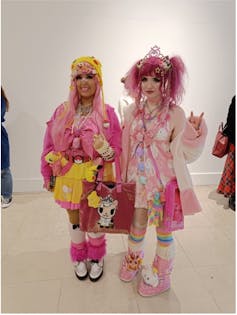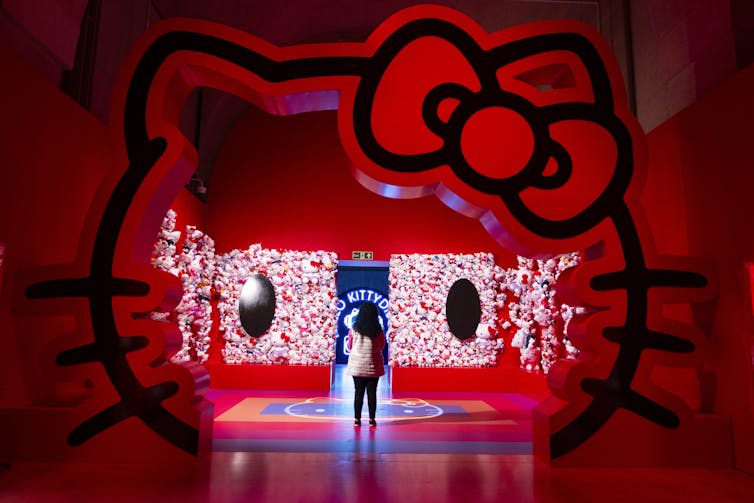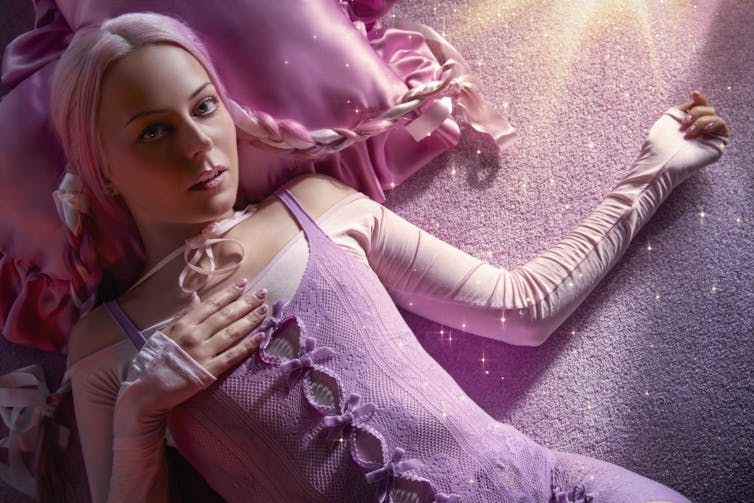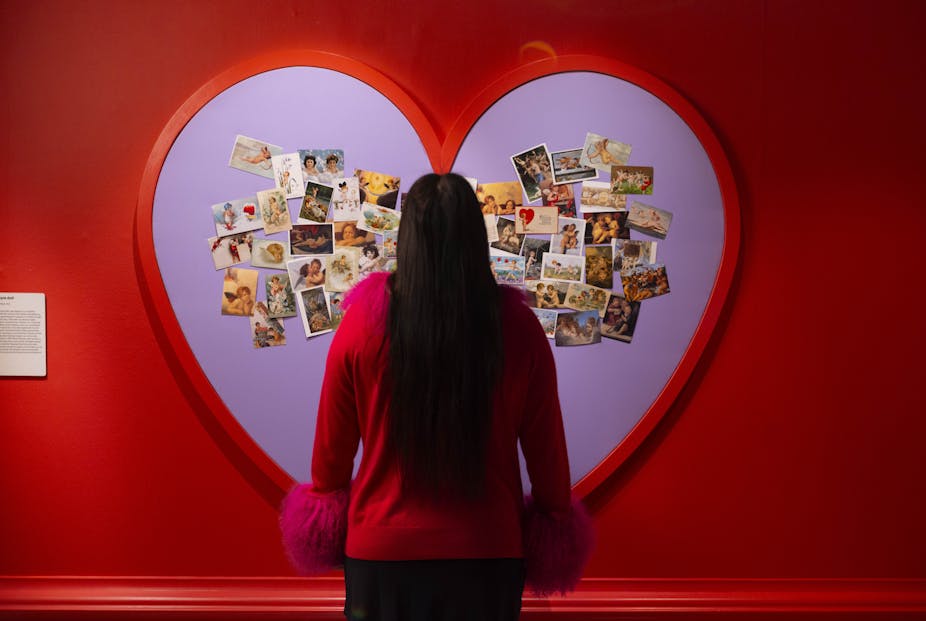Standing at the entrance to Somerset House, I noticed girls – and irrespective of age, they can only be described as girls – dressed head to toe in pink, bows and frills, from their elaborately curled hair to their Mary Jane platform heels.
Glittering and adorned with stickers, cute plasters and whimsical jewellery, they, like this exhibition, stand out in the late-January weather. Beacons of colour in a sea of wintery greys and blacks. What are they here for? It can only be the gallery’s new exhibition on Cute – the first large-scale exhibition to examine the phenomenon.
The exhibition starts by exploring “cute” as a historic appreciation of cats. It draws a connection from Victorian cat portraiture and collectable porcelain figurines to the Japanese Hello Kitty. The exhibition celebrates the brand’s 50th birthday through a glittering kitty disco.
Jumping through time and geopolitical boundaries, the show demonstrates that “cute” cannot be bound to a single time or place but is an accessible concept that can be claimed by anyone. Appearing in its modern context through Japanese products of the early 20th century known as “fancy goods” for young women, it goes on to encompass diverse cultural products, from comics to computers, appliances to televisions, colonising even the screen itself as an aesthetic in music videos of the 1980s and 1990s.

The Hello Kitty section of the exhibition is a universe of plushies and “Kitty mania” in all kinds of products, from shoes and suitcases to tablets and karaoke machines. This encapsulates the most obvious secondary function of cute – intense consumerism, and its ability to sell objects of all kinds.
Cute is a slippery word
Moving upwards, visitors enter the “cute universe”. Here “cuteness” fragments and distorts into many shapes and meanings.
Playing on the word “slipperiness”, which is invoked several times in the catalogue, the exhibition’s efforts to put cute into distinct categories wrestles with its fluid qualities, which clamour for attention among the many objects on display.
The show is divided into sections – “cry baby”,“play together”, “sugar-coated pill”, “monstrous other” and “hypersonic” – which all valiantly attempt to define “cute”. But the word resists definition. Objects of all kinds harness the differing qualities of cute to incite emotions – of sympathy, tenderness, love and desire. Though which emotions an object evokes vary, depending on the viewer.

The “cute universe” offers a deeper look at the concept through displays on community, how cute can disguise agendas, the juxtaposition of cute and horror and the glistening promise of cute as a future lifestyle aesthetic. The exploration reveals “cute” to be impossible to pin down. Neither good nor bad, it is a tool to be used, felt and interpreted, dependent on the viewer and performer in a codependent relationship of ambiguity.
Playing with scale
The exhibition also plays with scale, with both oversized and undersized installations. This makes visitors feel they’ve become children once again, playing with tiny toys or experiencing an oversized world.
The immersive experience continues with hyper-feminine singer and visual artist, Hannah Diamond’s creations, which evoke girly pyjama parties and pink beanbags, staying up too late and watching music videos on TV.

These works are nostalgic, a retrospective longing for a time that has already passed. Within cute is a performance of desire, filling in the gap between what we have and what we have lost. The performance of cuteness can only take place in the presence of loss of innocence.
So what to think of this exhibition of cute? As the curator Claire Catterall told me, the show hints rather than dictates its meaning. Yet, in the end, the bigger questions remain: what is cute doing to society? What does it mean that we are so complicit in its manipulation? Who are the players in cute, and who gets to decide?
Ultimately, the exhibition leaves us to decide for ourselves, but how can we when the concept itself is so slippery? I left Somerset House, disoriented and fizzing, as if I had consumed too many sweets. And yet, as I thought about the exhibition on my journey home, I craved a second helping.

Looking for something good? Cut through the noise with a carefully curated selection of the latest releases, live events and exhibitions, straight to your inbox every fortnight, on Fridays. Sign up here.

